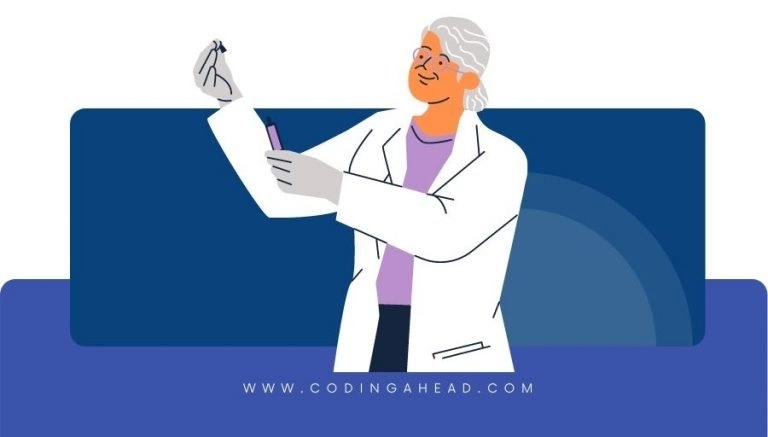How To Use CPT Code 33675
CPT 33675 describes the closure of multiple ventricular septal defects using sutures or patch grafts to prevent the mixing of oxygenated and deoxygenated blood in the ventricles. This article will cover the description, procedure, qualifying circumstances, appropriate usage, documentation requirements, billing guidelines, historical information and billing examples.
1. What is CPT Code 33675?
CPT 33675 can be used to describe the closure of multiple ventricular septal defects by a healthcare provider. This procedure involves using sutures or patch grafts to prevent the mixing of oxygenated and deoxygenated blood in the ventricles of the heart. It is typically performed when the patient is under anesthesia and requires an incision in the chest to access the heart.
2. Official Description
The official description of CPT code 33675 is: ‘Closure of multiple ventricular septal defects with sutures or patch grafts.’
3. Procedure
- The healthcare provider makes an incision in the chest, typically through a median sternotomy, to access the heart.
- The patient is placed on cardiopulmonary bypass (CPB) to temporarily take over the function of the heart and lungs.
- The provider opens the right atrium and examines the first ventricular septal defect.
- The defect is closed using either sutures or a patch graft.
- If there are additional defects, the provider locates and closes them using the same technique.
- The patient is taken off CPB, and the incisions in the heart and chest are closed.
- The provider checks for bleeding, removes any instruments, and completes the closure of the incision in the chest.
4. Qualifying circumstances
CPT 33675 is performed on patients with multiple ventricular septal defects that require closure. These defects are congenital and result in the incomplete closure of the wall between the right and left ventricles, allowing oxygenated and deoxygenated blood to mix. The procedure is typically performed by a healthcare provider who is experienced in cardiac surgery.
5. When to use CPT code 33675
CPT code 33675 should be used when a healthcare provider performs the closure of multiple ventricular septal defects using sutures or patch grafts. It is important to note that this code is specific to the closure of multiple defects and should not be used for a single defect closure. If the provider is closing a single ventricular septal defect, a different CPT code should be used.
6. Documentation requirements
To support a claim for CPT 33675, the healthcare provider must document the following information:
- Patient’s diagnosis of multiple ventricular septal defects
- Description of the closure technique used (suturing or patch graft)
- Date of the procedure
- Details of the procedure, including any additional incisions made to locate and close the defects
- Use of cardiopulmonary bypass (CPB)
- Confirmation of closure of all identified defects
- Any complications or additional procedures performed
- Signature of the healthcare provider performing the procedure
7. Billing guidelines
When billing for CPT 33675, ensure that the procedure involves the closure of multiple ventricular septal defects using sutures or patch grafts. It is important to accurately document the details of the procedure and any additional incisions made. CPT code 33675 should not be reported if the closure is performed for a single defect. It is also important to follow any specific billing guidelines provided by insurance companies or payers.
8. Historical information
CPT 33675 was added to the Current Procedural Terminology system on January 1, 2007. There have been no updates or changes to the code since its addition. However, it is important to stay updated with any changes or revisions to the code in future editions of the CPT manual.
9. Examples
- A healthcare provider performs the closure of multiple ventricular septal defects using sutures in a patient with a complex congenital heart condition.
- A cardiac surgeon uses patch grafts to close multiple ventricular septal defects in a pediatric patient with a history of heart defects.
- A patient with multiple ventricular septal defects undergoes a surgical procedure to prevent the mixing of oxygenated and deoxygenated blood in the heart.
- A healthcare provider performs the closure of multiple ventricular septal defects using a combination of sutures and patch grafts in an adult patient with a history of heart disease.
- A cardiac surgical team performs the closure of multiple ventricular septal defects using sutures and patch grafts in a patient with complex congenital heart abnormalities.
- A patient with multiple ventricular septal defects undergoes a surgical procedure to improve heart function and prevent complications.
- A healthcare provider performs the closure of multiple ventricular septal defects using sutures and patch grafts in a patient with symptoms of heart failure.
- A cardiac surgeon uses sutures and patch grafts to close multiple ventricular septal defects in a pediatric patient with a history of recurrent respiratory infections.
- A patient with multiple ventricular septal defects undergoes a surgical procedure to correct the abnormal blood flow in the heart.
- A healthcare provider performs the closure of multiple ventricular septal defects using sutures and patch grafts in a patient with a complex congenital heart condition.



